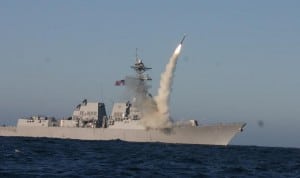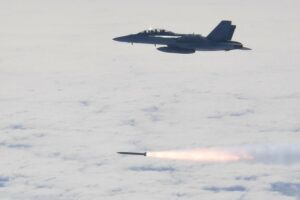The Australian government this week announced it is buying over $1.1 billion in missiles to strike opponents from longer ranges.
On Aug. 21 the Australian Ministry of Defense said it will buy over 200 RTX [RTX] Tomahawk cruise missiles from the U.S. to be used on its
Hobart-class destroyers at a value of about $836 million.

This will make Australia the third country to field Tomahawk missiles after the U.S. and United Kingdom. The missiles have a range of over 930 miles.
The ministry announced it also plans to acquire more than 60 Northrop Grumman [NOC] Advanced Anti-Radiation Guided Missile – Extended Range (AARGM-ER) missiles for $277 million to be fielded by the Royal Australian Air Force’s EA-18G Growler and F/A-18F Super Hornet jets and ultimately F-35A Lightning IIs.
AARGM-ERs are designed to target opponent radar systems.
Separately, the Defense Ministry is ordering $32 million of the Spike Long-Range 2 anti-tank guided missiles from Varley Rafael Australia (VRA). The Spikes missiles will be based on the Australian Army’s Boxer combat reconnaissance vehicles to target enemy armor at a range of over three miles.
VRA is a joint venture between Australia’s Varley Group and Israel’s Rafael Advanced Defense Systems.
The government said it expects VRA to deliver the first Spike missile in early 2024 and underscored participation by the Varley Group “will present options to [the] government for domestic manufacturing.”
The ministry said these purchases are in line with the Defense Strategic Review that argued the country’s military needs to hold adversaries at risk further from Australian territory via longer range weapons. It did not disclose specific delivery timetables for the other weapons.
“With the acquisition of these formidable long-range strike missiles the Albanese Government is acting with pace to deliver on the recommendations of the Defence Strategic Review. We are investing in the capabilities our Defence Force needs to hold our adversaries at risk further from our shores and keep Australians safe in the complex and uncertain world in which we live today,” Minister for Defence and Deputy Prime Minister Richard Marles said in a statement.

Minister for Defence Industry Pat Conroy also noted that while the government is buying the weapons to quickly deliver capabilities it is also considering options to build these kinds of missiles domestically “because of the importance of building sovereign Australian defense manufacturing capabilities.”
This announcement came days after the State Department approved a potential $975 million Foreign Military Sale to Australia for 22 Lockheed Martin [LMT] surface-to-surface High Mobility Artillery Rocket Systems (HIMARS) launchers. The sale also includes 190 M30A1 Guided Multiple Launch Rocket System (GMLRS) rockets (Defense Daily, Aug. 18).
The Australian Defense Ministry said it would ultimately spend about $1 billion on this effort to double Australia’s HIMARS launcher complement to 42 total.
It added the government is developing plans to domestically manufacture HIMARS-compatible missiles starting around 2025.